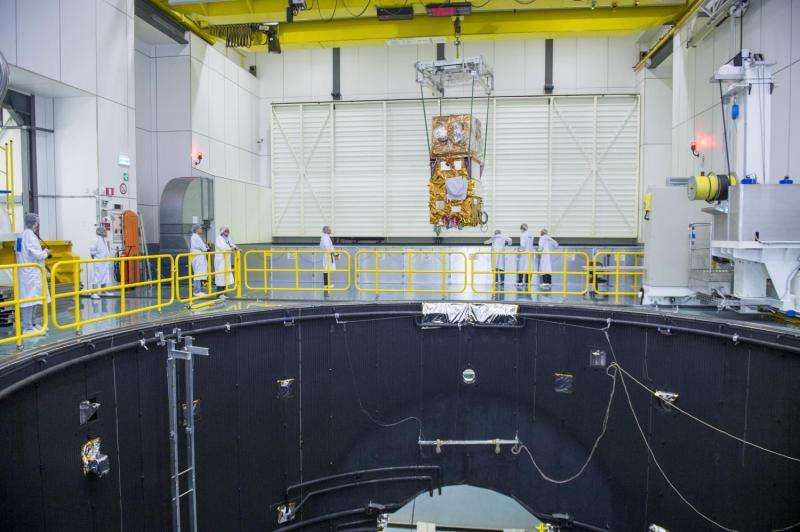Image: Sentinel-2B entering LSS

ESA's Sentinel-2B Earth-observing satellite being lowered into Europe's largest vacuum chamber, at the start of a test campaign to ensure it is ready to serve in space.
The satellite is now in ESA's 15 m-diameter Large Space Simulator, where high-performance pumps will remove all air within the chamber to create an orbital-quality vacuum. Meanwhile, liquid nitrogen circulates through the black walls to mimic the cold of sunless space.
Sentinel-2B arrived by lorry on the night of 15 June, making the first time any of the Sentinel family of satellites serving the Copernicus initiative for global environmental monitoring has visited ESA's technical heart, in Noordwijk, the Netherlands.
Sentinel travelled from Airbus Defence and Space's Friedrichshafen facility in Germany, where it was first assembled and then all of its main elements underwent detailed testing.
Sentinel-2B is a twin of Sentinel-2A, launched a year ago. The two satellites together will provide global multispectral coverage, extracting valuable environmental data from the colours of land vegetation and coastal waters. They are equipped with laser communications to return data quickly to Earth.
The largest centre of its kind in Europe, ESA's test facilities simulate every aspect of the space environment. Everything is housed under a single roof within a controlled cleanroom environment to avoid contaminating flight hardware.
A sequence of tests will be conducted on Sentinel-2B between now and the end of October.
The current thermal-vacuum testing will be followed by electromagnetic compatibility testing within the Maxwell chamber, to ensure the satellite can operate safely with its ground station – as well as with its launcher during its crucial first moments of life – without harmful interference.
Next, Sentinel will be blasted inside the Large European Acoustic Facility to simulate the extreme noise experienced atop the launcher during liftoff and its early climb to orbit.
A final set of performance tests will then check that all of its systems have survived exposure to these simulated mission environments.
Provided by European Space Agency

















